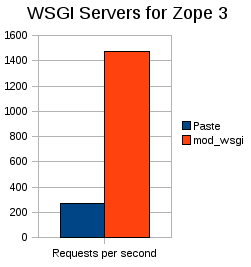I’ve been racking my brains to find something to present at PyCon 2010. I have been trying to find something good to present since PyCon 2003, when I last presented at PyCon. (I talked about Ape, the Adaptable Persistence Engine for Zope.) I really liked the experience of presenting and it led to a lot of interesting conversations. Since then, however, nothing has really struck me as a good idea for a presentation. The right idea has to fit at least these criteria:
- It’s something I’m good at.
- At least a handful of PyCon attendees would like to learn more about it in a presentation.
- I can’t spend weeks to prepare for the presentation.
This year, I was planning to do a really fun presentation by writing some Python scripts for controlling a RepRap, then I was going to present the hardware and software. That didn’t work out, however, because the warping issues with ABS (a type of plastic) are just too severe to print useful parts, so my RepRap has sat idle. (I’m now considering PLA, but it’s a newish and expensive material.)
Here are a few other ideas for a presentation topic. What do you think? Any other ideas?
- RelStorage. I could talk about future plans, why I think it is an improvement over ZEO, and why you should use it. There seem to be a lot of people with questions about RelStorage, so it would be nice to have some time to answer the questions in a big room so others can hear the answers.
- KARL and BFG. This would probably be a team presentation. KARL is some fairly interesting software that I got to help develop this year. I could talk about the software, along with the development experience and style. In KARL we made a conscious choice to ignore certain apparent DRY violations, leading to significant productivity gains.
- A friendly introduction to Buildout. Buildout is a tool that a lot of developers need, but don’t know it yet. The function that Buildout performs is as important as version control and automated testing. Come find out why Buildout is far better than a pile of Makefiles.
- An introduction to Buildout (zc.buildout) for people familiar with Apache Maven. Buildout and Maven fill approximately the same niche, but for different audiences. (Buildout for Python, Maven for Java.) Maybe there are Mavenites at the conference who would like to switch to a more Python centric system.
- A discussion of text indexing in Plone and BFG. This might be a narrow topic, but I find it interesting and important. I have found ways to reduce complex 90 second text searches to 1 second. The solution is not pure Python, unfortunately. 😉 I have also thought about how to expand into areas like faceted search/browse functionality.
Feedback encouraged!
